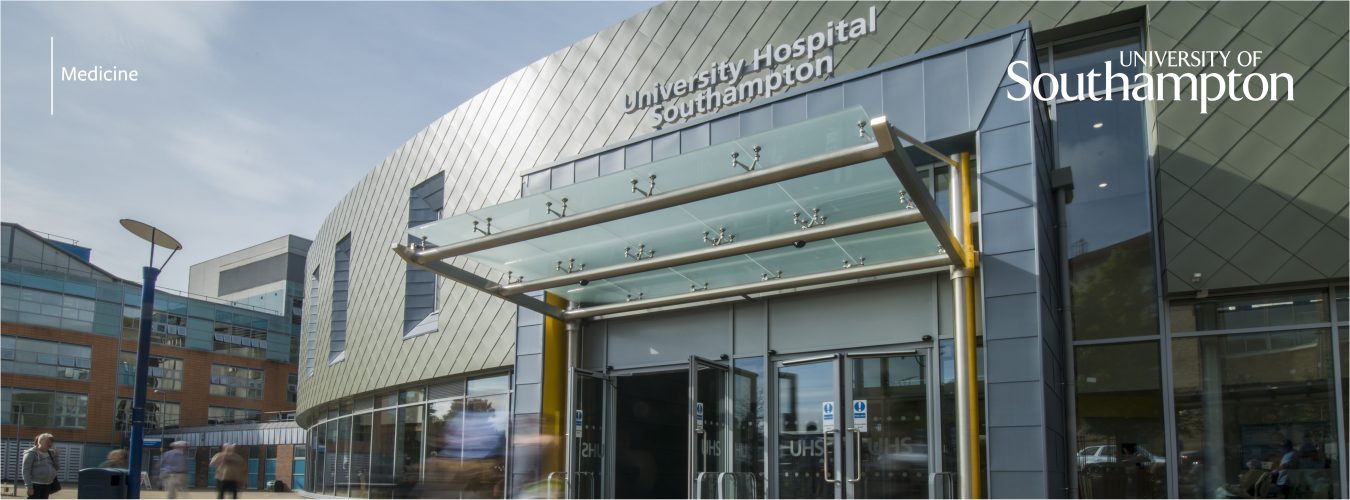‘Inspiring Stories’ with Emma Lofthouse
Research Manager, Wessex Institute
This is part of the Engaged Medicine ‘Inspiring Stories’ blog series. The blogs explore the stories behind outreach and patient-public engagement activities of staff and students from the University of Southampton’s Faculty of Medicine.
What do you do to engage and outreach with the public or patients?
The majority of my public engagement experience to date has come from being a postdoctoral researcher in the Placenta Lab in the Institute of Developmental Sciences. In 2017, I made ‘The a-MAZE-ing placenta’, an interactive, educational game that demonstrates the complexities of pregnancy and the many roles of the placenta in growing a healthy baby. By navigating the nutrient ball around the placenta maze and avoiding obstacles representing pregnancy complications, parents and children of all ages can learn about the Developmental Origins of Health and Disease hypothesis that underpins the work that the Placenta Lab does.
Having an interactive prop draws people in and I think it’s much easier to initiate a conversation about the research compared to simply speaking at or questioning the public. ‘The a-MAZE-ing placenta’ has since been invited to conferences, open days, country shows, science festivals and schools to talk about the work we do. In September 2021 I started a new job at the Wessex Institute as a Research Manager in the Global Health Team and have left ‘The a-MAZE-ing placenta’ in the very capable hands of the Placenta Lab who I have no doubt will continue doing a fantastic job at future public engagement events. I am obviously very new to The Wessex Institute but I can already see that patient benefit and involvement is at the forefront of everything the NIHR funds so I am looking forward to new opportunities and training.
What has driven you to participate in public engagement or patient involvement?
As a STEM ambassador, I have tried to do as much public engagement as I can while balancing lab work and teaching commitments. STEM organised events are designed to educate and, more importantly, inspire young people to continue with STEM subjects at school and to help open their eyes to what careers are available to them. I would have loved these events when I was at school so I think they are a great opportunity for students of any age and I would encourage other scientists to also get involved.
Public engagement is now strongly encouraged in the research community with many funding bodies requiring public engagement activities as a condition of research grants. There is still a great need to demystify research and disseminate new findings for patient benefit, something which is very key in my new job with Global Health. Outreach has great benefits for the public but just as many advantages for the scientist; it provides an opportunity to improve your communications skills with all types of audiences and publics as well as giving the opportunity to inspire someone.
How did you get started with Public Engagement or patient involvement?
When I first started doing public engagement I initially participated in organised STEM events which helped me build up my confidence and skills. I became a STEM ambassador via Winchester Science Centre and then got involved with ‘LifeLab’ at the General Hospital. It was at some of these early sessions that I realised I really enjoyed talking to students about my research and then took it upon myself to spread the message about how brilliant the placenta is. I then took part in a public engagement pilot scheme run by Professor Read in Chemistry and this was hugely beneficial, filling gaps in my knowledge and training as well as really helping me to improve how I evaluate the success of any events I run and how to collate data for impact statements.
Why do you consider Public Engagement / Patient Involvement to be important?
It’s probably not news to anyone that public engagement enables mutual learning between scientists and members of the public, providing the opportunity for a two-way dialogue that allows discussions about the benefits and challenges of science. Initially, public engagement aimed to increase public understanding of specific scientific discoveries and topics. However, this is now out-dated because a one-way communication is flawed as the vast majority of the general public have a good understanding of basic scientific concepts but have opinions and questions of their own. I think trust in science and research is also improving thanks to public engagement and it provides an excellent opportunity for transparency which has been lacking in the past. Public outreach is now evolving with engagement events furthering public understanding whilst simultaneously providing an opportunity for discussion in which opinions, questions and concerns can be addressed in an interactive way.
What reaction do you get during an engagement event?
Generally, the reaction I get from public engagement events is incredibly positive and we get useful feedback from parents, teachers and school children of all ages. I take particular delight in changing someone’s opinion from ‘the placenta is gross’ to ‘wow that’s cool’. I think whenever we do STEM events we also contribute to the wider task of breaking down stereotypes that still exist in STEM subjects by explaining all the different collaborators that we work with e.g. engineers. The more events I do, the more I have noticed that students ask questions and I am always pleased and surprised by how in depth some of these questions can be.
Stay Connected! To find out more about the ‘Inspiring Stories’ series, Faculty of Medicine educational programmes and research, or to get involved use the links below or contact Dr Lucy Green.

University staff or students click here for the Engaged Medicine SharePoint

